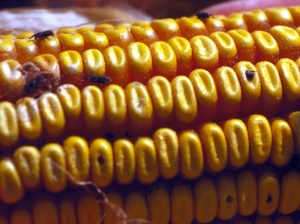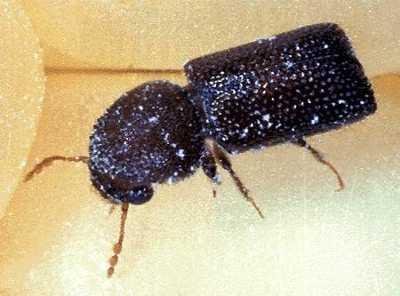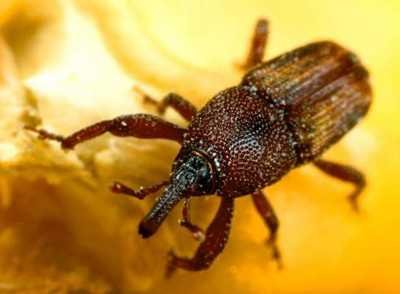(Prostephanus truncatus) (Sitophylus spp.)
Credits:Biovision-infonet

(c) University of Georgia Archives, University of Georgia, Bugwood.org

(c) NRI/MAFF. Reproduced from the Crop Protection Compendium, 2004 Edition. (c) CAB International, Wallingford, UK, 2004

(c) USDA, ARS (Public Domain
They attack stored maize grains. Both the adults and the larvae (grubs) of these beetles feed in the grains. Adults come from infested cobs in the field or from an infested maize store and lay eggs in the grains. They attack maize both in the field and after harvest. Attacked maize grains lose all their contents and are not fit to eat. These pests become a serious problem in short time if no control measures are applied. The larger grain borer also attacks dried cassava roots and even the wooden structures of the stores.
What to do:
- Conserve natural enemies. An imported predatory beetle Teretrius (formerly Teretriosoma) nigrensis has been released in several African countries in an attempt to control the larger grain borer.